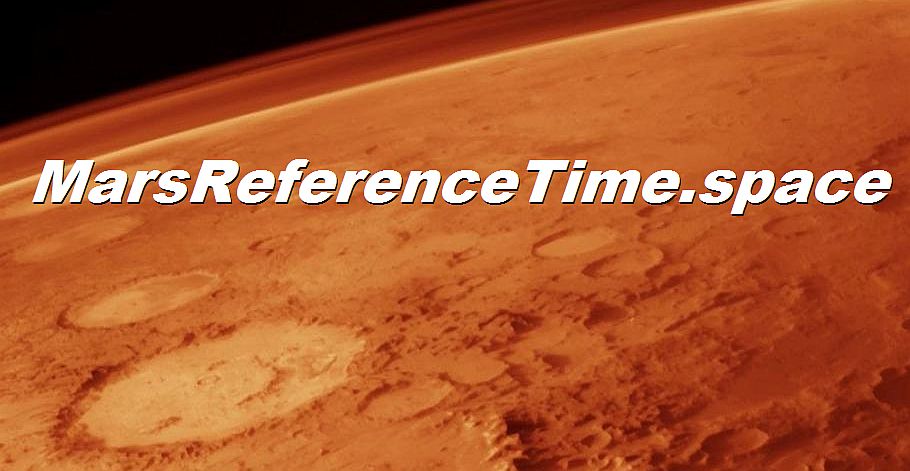What time is it on the Mars? The European Space Agency (ESA) is seeking to answer this question and on the moon as well. Space organisations around the world are studying the best way to establish "a common reference time," an idea already outlined in November 2023 at a meeting in the Netherlands. With ever expanding exploration it will be needed.
Mars exploration could use a common reference time. The Red Planet: Mars is the fourth planet from the Sun and is most easily identified in the night sky by its bright red color. This distinguishing feature is caused by the planet's atmosphere which is composed mainly of carbon dioxide and other trace elements. The planet's distance from the Sun also has an effect on its appearance as it is farthest away from the Sun in comparison to the other planets in our Solar System.
Mars is also known for having the largest volcanic structure in the solar system, Olympus Mons, and the largest canyon in the solar system, Valles Marineris. Mars' surface area is comparable to that of the Earth, although the planet itself is much smaller in size. As a result, the surface of the planet is covered in numerous craters, giving it its otherworldly appearance.
There is currently no known life on Mars, although there may have been in the past. The planet is thought to have once had lakes and rivers, but these have now all dried up. The search for life on Mars continues and there are plans to send a manned mission to the planet in the 2030s.
Some interesting facts about Mars include that it is the second brightest planet in our solar system, after Venus, containing ice caps at its polar regions. The planet is believed to have once had an environment suitable for liquid water and may have once been home to life forms.
The planet is also home to the two Mars rover missions- the Spirit rover and the Opportunity rover- which have been exploring the planet since 2004. This has provided us with valuable information about Mars and its environment.
The longest day on Mars is an impressive 40 minutes and 35 seconds, while its year lasts 687 Earth days. Mars is also affecting in the way the Sun's radiation is reflected back into space, playing a key role in cooling the Earth's atmosphere.
The surface of Mars is unlike any other planet's. Its surface is composed of dusty red rocks, craters and other geological features. The planet's surface is also home to unique landforms such as impact craters, mountain ranges and mesas. Mars is also home to active dust storms that circulate across its surface, which can often envelope the entire planet.
The climate on Mars is much colder than Earth and is inhospitable to human life. The average temperature on the Martian surface is -81 degrees Fahrenheit, with day time temperatures ranging from -140 degrees Fahrenheit to -190 degrees Fahrenheit at night.
The atmosphere of Mars is much thinner than that of Earth. It is composed mostly of carbon dioxide, with trace amounts of nitrogen, argon and other elements. This atmosphere has been responsible for the formation of spectacular Martian sunsets, which have been described as unearthly and have captivated human imagination since we first sent a spacecraft to Mars in 1965. The climate on Mars: The climate on Mars is extremely cold, with temperatures ranging from -140 degrees Fahrenheit during the day to -190 degrees Fahrenheit at night. The atmosphere is much thinner than Earth's and does not offer much protection from radiation or insulation from the cold. Therefore, the planet is inhospitable to human life and any form of life is likely to have a very difficult time in such harsh conditions.
Although life on Mars has yet to be discovered, there is abundant evidence to suggest that life may have once existed on the planet in the past. Scientists have found rocks on the surface of Mars that show evidence of past flowing water. As water is essential for life, this suggests that the planet may have once been capable of supporting life forms. Research is continuing to look for signs of possible life on Mars, but so far no evidence has been found.
Mars is an incredible planet, with its bright red color, unique surface features, and thin atmosphere it has captivated human imagination since the first spacecraft began exploring it in 1965. Although it is inhospitable to human life the possibility of life on the planet in the past is an exciting prospect and a major focus of Mars exploration. The search for life on Mars continues and with time hopefully it will yield some exciting results.
The search for life on Mars continues and there are plans to send a manned mission to the planet in the 2030s. To faciliate co-ordination of various exploration, Mars Reference Time is being estiblished. |
